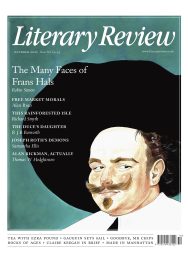Norma Clarke
Move Over, Michelangelo
The Story of Art without Men
By Katy Hessel
Hutchinson Heinemann 520pp £30
In bold orange on the spine and cover of this book are the words ‘The Story of Art’. The author’s name is in blue and also in bold. The cover is yellow, and it is only in a certain light and by holding the book at an angle that you see, faintly outlined in white, the words that make up the rest of the title: ‘without Men’. It’s a visual trick that illustrates Katy Hessel’s purpose in writing this book. For so long women artists have been missing in the history of art. Now the tables are turned.
What happens to the story of art if you take out the men? First of all, it makes you question the idea of there being a story of art at all. There are multiple stories. Hessel delivers a big, baggy compendium, beginning with Renaissance Europe and encompassing China, Brazil, Mexico, Japan, Africa, America and Australia. Her guiding principle has been not only to leave men out but also to resist the habits of thought that lead one to give men primacy. The women here are not presented as followers, imitators, lovers, spouses or children of men; we see them as originators, their work and ideas foregrounded. Just as few people missed the women when the story of art was told without them, so the story without men feels like a rich, interesting and complicated one.
Printed on glossy paper and profusely illustrated – there is a colour reproduction on almost every page – this is a generous introduction to some familiar and some less well-known artists. The organisation is roughly chronological (though there is the odd detour), running all the way up to the

Sign Up to our newsletter
Receive free articles, highlights from the archive, news, details of prizes, and much more.@Lit_Review
Follow Literary Review on Twitter
Twitter Feed
Though Jean-Michel Basquiat was a sensation in his lifetime, it was thirty years after his death that one of his pieces fetched a record price of $110.5 million.
Stephen Smith explores the artist's starry afterlife.
Stephen Smith - Paint Fast, Die Young
Stephen Smith: Paint Fast, Die Young - Jean-Michel Basquiat: The Making of an Icon by Doug Woodham
literaryreview.co.uk
15th-century news transmission was a slow business, reliant on horses and ships. As the centuries passed, though, mass newspapers and faster transport sped things up.
John Adamson examines how this evolution changed Europe.
John Adamson - Hold the Front Page
John Adamson: Hold the Front Page - The Great Exchange: Making the News in Early Modern Europe by Joad Raymond Wren
literaryreview.co.uk
"Every page of "Killing the Dead" bursts with fresh insights and deliciously gory details. And, like all the best vampires, it’ll come back to haunt you long after you think you’re done."
✍️My review of John Blair's new book for @Lit_Review
Alexander Lee - Dead Men Walking
Alexander Lee: Dead Men Walking - Killing the Dead: Vampire Epidemics from Mesopotamia to the New World by John Blair
literaryreview.co.uk